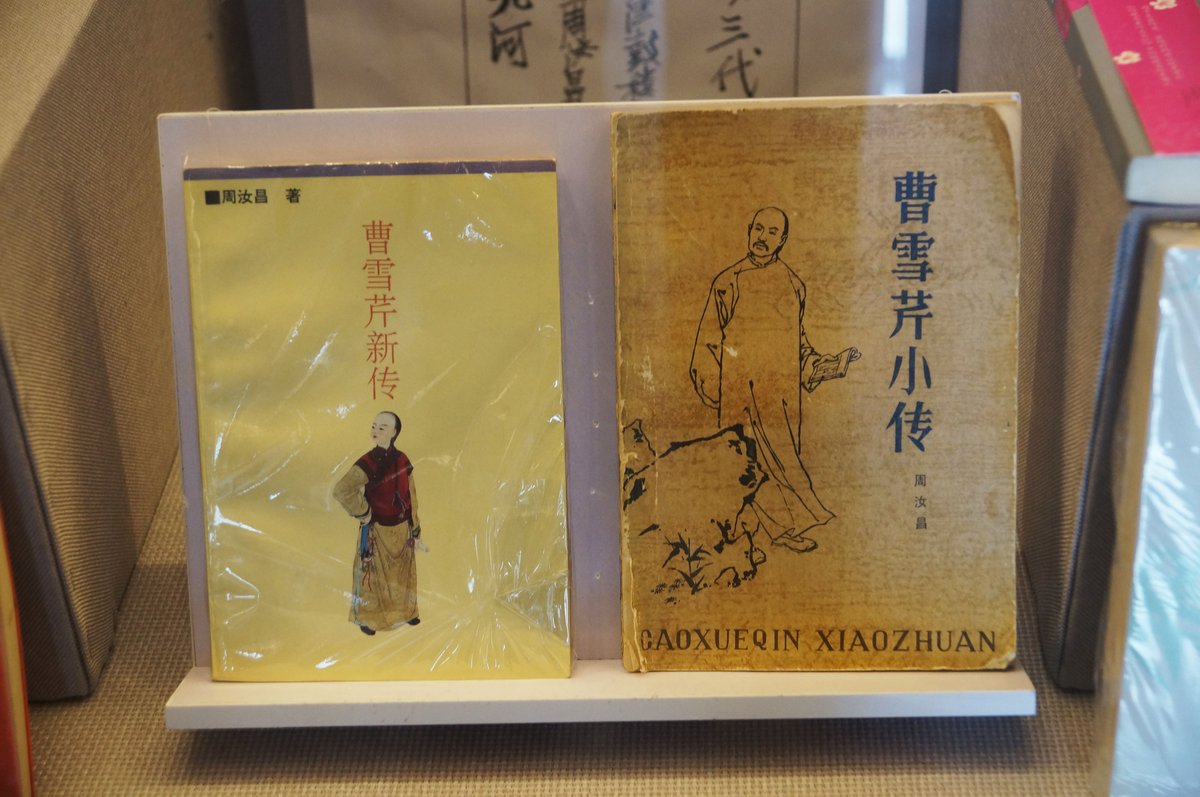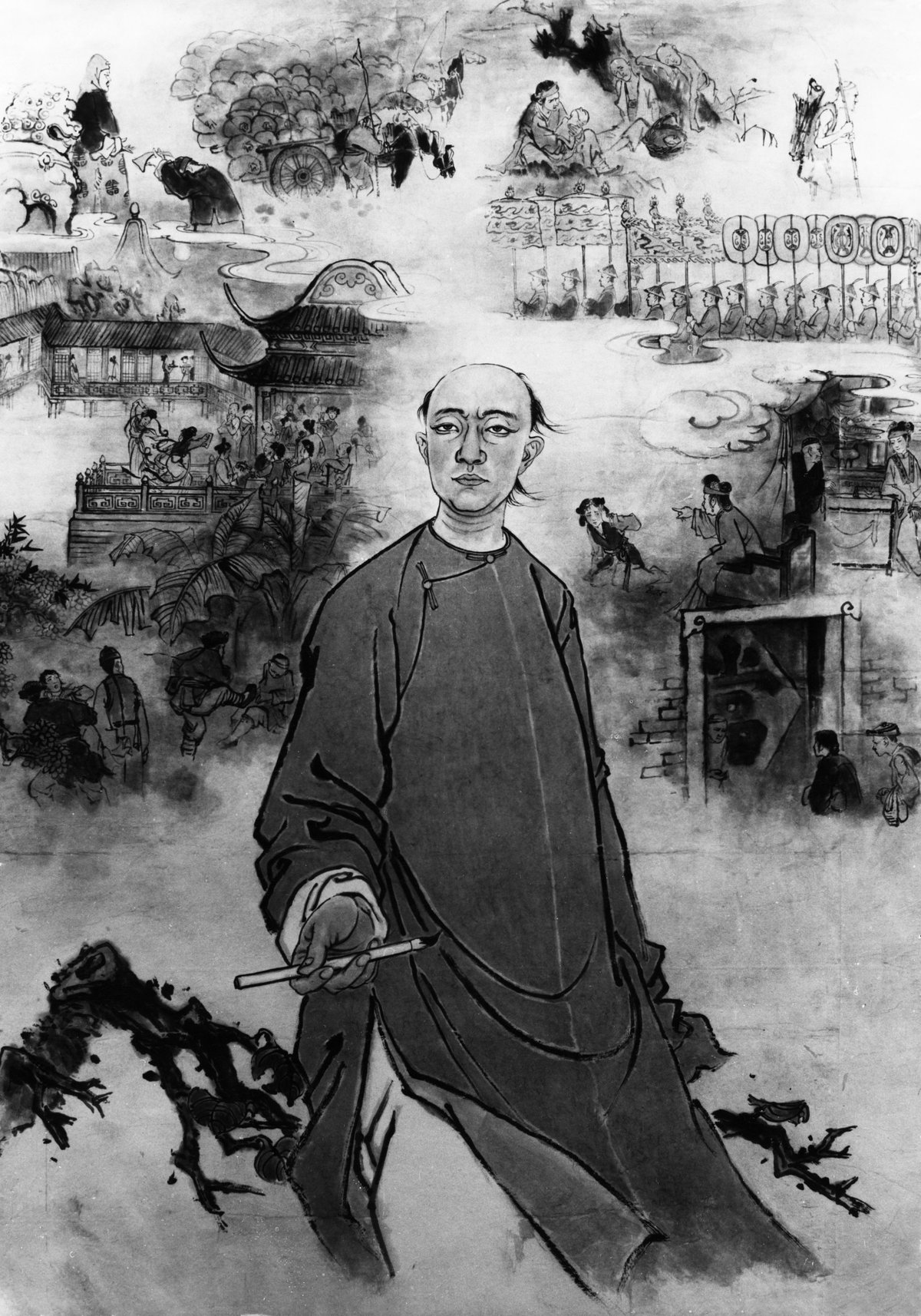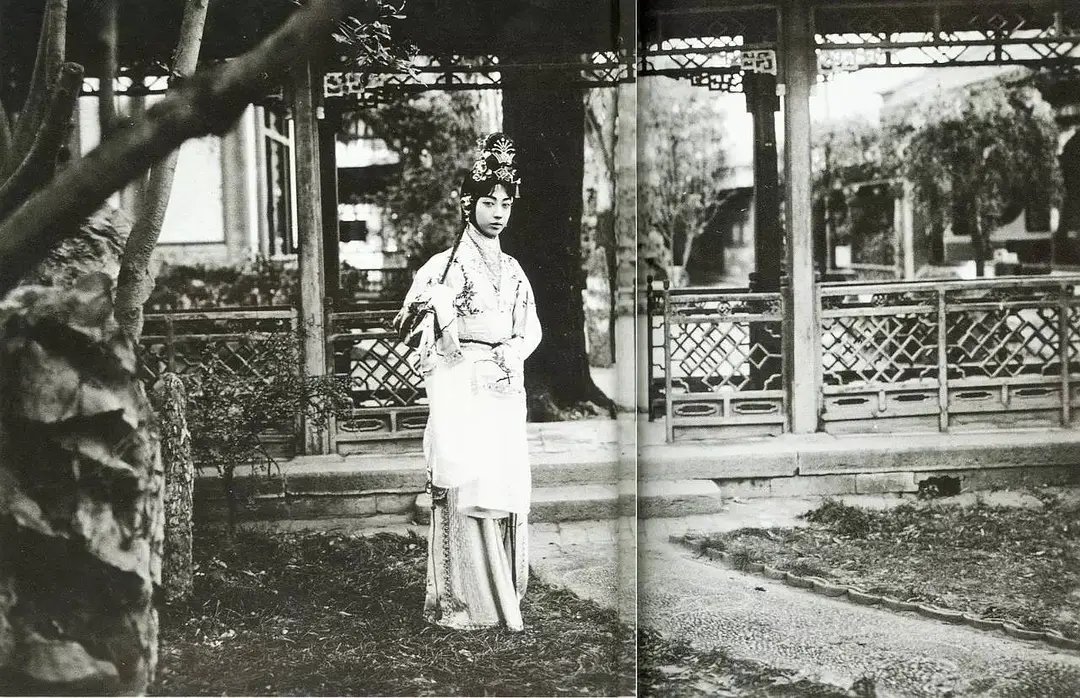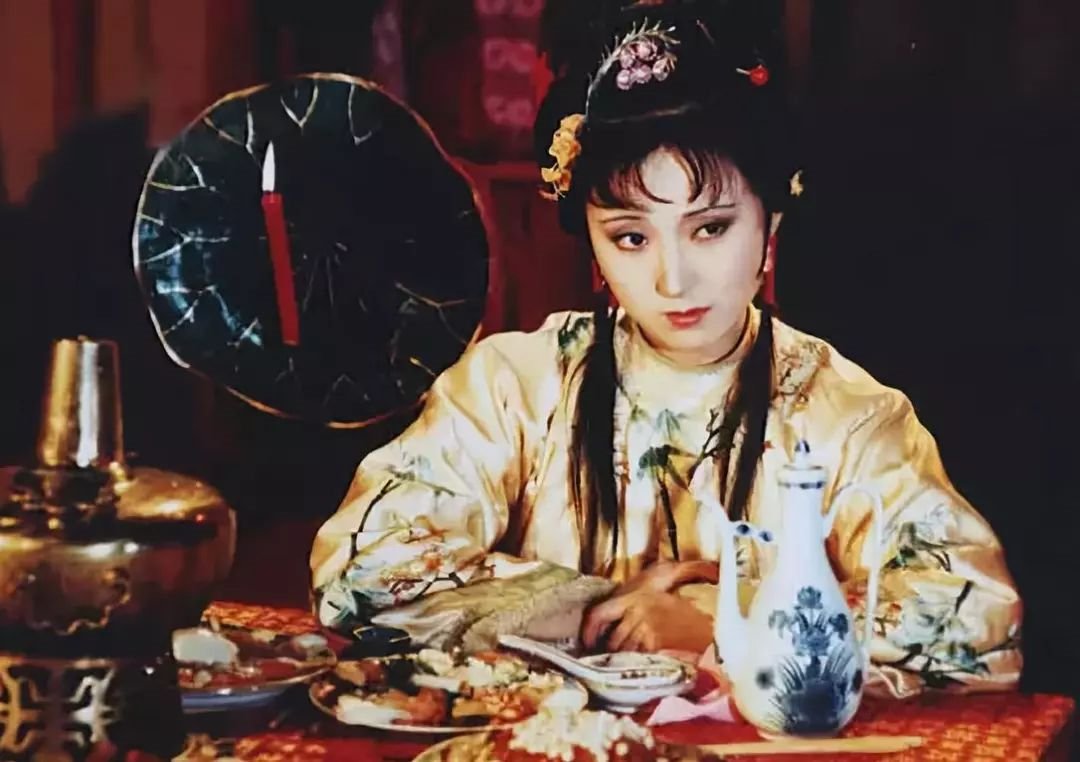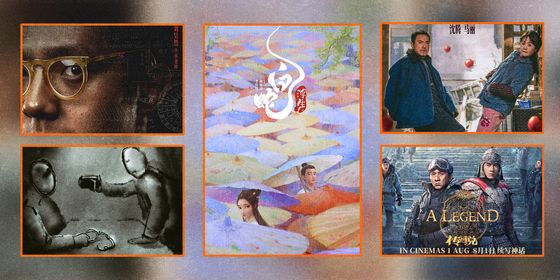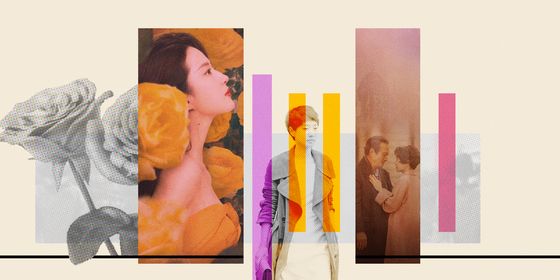Classic novel “Dream of the Red Chamber” has been subject to dozens of film and TV adaptations in the last century, but why is no one satisfied?
Adapting a beloved novel with a 250-year-old fanbase was always going to be a thankless task. However, according to director Hu Mei, “AI-generated one-star reviews” and the cyberbullying of actors in her new film The Dream of the Red Chamber have gotten so out of hand that she has asked lawyers to step in.
Released in August, Hu’s film is the latest adaptation of the classic Chinese novel Dream of the Red Chamber (《红楼梦》, also known as A Dream of Red Mansions and The Story of the Stone), to flop. Critics attacked it as soon as it hit the screens. Among the criticisms was the director’s choice to compress an epic novel—which includes hundreds of characters and countless subplots focused on politics, morality, and mysticism—into the love story between the characters Jia Baoyu and Lin Daiyu, as well as other deviations of characterization, dialogue, and plot.
At the time of writing, the film’s rating on China’s biggest review platform Douban stands at 3.4 out of 10. “The scenes are crude, the behavior is vulgar, and the language is coarse. Unbearable to watch!” reads a much-upvoted review.
Written in the 1700s by Cao Xueqin (曹雪芹), Dream of the Red Chamber remains one of the most influential novels in China today, captivating readers with its intricate narrative, complex characters, and mystery. Events from the novel and characters like Jia Baoyu and Lin Daiyu have entered the everyday lexicon, and every attempt to bring this story to the big screen in the last century has struggled to satisfy everyone. The novel’s formidable scale, ambiguous writing style, and outsized cultural influence, as well as the legacy of a beloved 1987 TV version, have left adapters with big—maybe impossible—shoes to fill.
Doubtful sequels
Written during the height of the Qing dynasty (1616 – 1911), Dream of the Red Chamber is thought to draw heavily from the lived experiences of its author. Cao was born into a prominent family that had enjoyed influence and wealth under the reign of the Kangxi Emperor. However, during Cao’s youth, his family was purged from the court by Kangxi’s successor, and fell into poverty. Cao lived in Beijing, where he wrote his masterpiece over a period of 10 years, passing handwritten manuscripts around his friends and literary circles for review and making five rounds of revisions.
Read more about the adaptation struggle of popular series in China:
- Three-Body Conundrum: Why Liu Cixin’s Trilogy Defies Adaptation
- Why 1980s Hong Kong Novels Still Dominate Chinese Screens
- The Chang Trap: Why Eileen Chang’s Writing Rarely Works on the Big Screen
The ending to Cao’s novel, however, remains a point of debate. When Cao died unexpectedly in the 1760s, only the first 80 chapters of the novel remained, and the plot was left incomplete. The rest, if ever completed by the author, may have been lost due to strict policies at that time that censored Cao’s scathing political critiques. But when the scholars Gao E (高鹗) and Cheng Weiyuan (程伟元) published the first printed edition of the work in 1791, they had added an additional 40 chapters.
Though Gao and Cheng claimed they were working from Cao’s lost manuscripts, many scholars and literary critics dedicated to study of the book—collectively known as “Redologists (红学家)”—along with ordinary fans over the centuries, consider the final 40 chapters to be a type of Qing dynasty fan fiction, pointing out inconsistencies in their characterization, tone, and literary quality, as well as many departures from the foreshadowing of the first 80 chapters. Gao may have been the first target of flaming from the Red Chamber fandom when renowned Redologist Zhou Ruchang (周汝昌), in his 1953 book New Evidence on Dream of the Red Chamber, denounced him as “a despicable scoundrel with an ugly countenance,” calling for readers to “excise his false last 40 chapters from Dream of the Red Chamber and discard them into the trash.”
Choosing which version to follow has become the primary challenge for film and TV adaptations. The 120-chapter version will inevitably anger those who reject the last 40 chapters, while the 80-chapter version leaves the story without an ending. The 1987 TV series Dream of the Red Chamber opted for the latter approach. Its last six episodes were reconstructed from clues in the first 80 chapters and consultation with a team of experts. Though this adaptation is highly regarded, many critics consider its ending, especially the crucial scene of Lin Daiyu’s death, a failure.
Sacred source material
Dream of the Red Chamber’s lofty status as one of China’s classic novels means that “fidelity to the original” has become a golden standard for judging adaptations. The earliest film version was a black-and-white short from 1924, titled Daiyu Burying Flowers (《黛玉葬花》), which starred the Peking opera master Mei Lanfang (梅兰芳) and focused on one scene in one single chapter of the book. Since then, Red Chamber has been adapted into dozens of films and TV dramas, as well as operas, stage plays, and video games, each making different choices about whether to present the entire narrative or focus on key chapters and subplots.
The 2010 TV version of The Dream of Red Mansions, directed by Li Shaohong, was Redologists’ previous online whipping boy. Upon release, it was slammed for “destroying” a classic, with audiences denouncing the actors’ looks, the opera-inspired costume designs, and the eerie aesthetics of the show. All of this deviated from how readers imagined the source material, and the gloomy color palette reminded some netizens of a horror movie.
Faithful adaptations are a safer choice, and much of the praise for the 1987 series focuses on how closely it stuck to the novel. Wang Fulin, the director of the 1987 series, told News Magazine in 2008: “As a director, one always wants to show one’s unique style, but it won’t work for Dream of Red Chamber, where you can only precisely reflect every word.” Likewise, Xie Tieli, director of another acclaimed 1989 film version, wrote in 2002 that adaptations of famous works must respect the storyline, original spirit, historical background, characterization of the protagonists, and artistic style of the source material.
But not everyone agrees. When it was published in the 18th century, Cao’s novel was lauded for breaking established literary conventions, as it portrayed highly complex characters with flawed morals and real-life struggles. His narrative style was also original, characterized by subtle foreshadowing and intricate plotting. A number of critics found the 1987 version overly conservative, passive, and uninspired. As Redologist Cai Yijiang commented, “As the form of art changes, so should its content.”
Ambiguous content
Even sticking to the novel is no guarantee of plain sailing. Every Redologist has a different interpretation of the novel’s myriad symbolism and foreshadowing. Writer Lu Xun (鲁迅) once commented that when people read Red Chamber, “classicists see the I Ching, moralists see lewdness, talented scholars see lingering love, revolutionaries see anti-Manchu sentiments, and rumor mongers see palace secrets.”
The source material is no help, as it leaves many details ambiguous. The novel is not set in any particular dynasty or city (some of it even takes place in an “Illusory Realm”), the characters’ ages are unclear, and the passage of time is hard to follow, shown using the technique of montage. Each adaptation must take creative liberties, and of course, no choice makes everyone happy. The 1987 TV series used the same adult actors in all 36 episodes, and they were criticized for being too old; the 2010 version used both teenagers and adults to play the same characters at different ages, which some viewers found confusing and dissatisfying.
Visual adaptations also put the characters’ looks under scrutiny. Cao described Lin Daiyu’s appearance as: “Dusky arched brows that seemed to frown yet not frown, eyes that spoke of tender affection, that seem to smile yet not smile (两弯似蹙非蹙罥烟眉,一双似喜非喜含情目)”—poetic, but not helpful for casting. The actresses in both the 2010 drama and 2024 film were criticized for having “dead fish eyes,” though the 1987 performance by Chen Xiaoxu is considered iconic. The looks, dress, and conduct of the novel’s hundreds of other characters also frequently fall short of readers’ expectations.
Creators’ indifference
Some filmmakers don’t help their own case by showing a lack of knowledge and respect toward the novel. Li Shaohong, director of the 2010 series, openly admitted to not having read the novel in full; while Yang Mi, who played the maid Qingwen in the series, mispronounced a line related to her character during an interview. Zhang Miaoyi, the actress who plays Lin Daiyu in this year’s adaptation, is being flogged by fans for summing up her character as “rebellious” and “spiteful and caustic in speech”—a heretical interpretation to many novel readers.
While no adaptation is going to satisfy everyone, it’s to Cao’s credit that his work can still stir such passionate debates—and perhaps he has dubious adaptations to thank for that. In response to the criticism she received, Zhang Miaoyi wrote, “If by causing great controversy, and in turn attracting great attention, [the movie] inspires more people to buy the novel and read an old classic, then this is a victory for the popularization of Chinese classic literature.”







